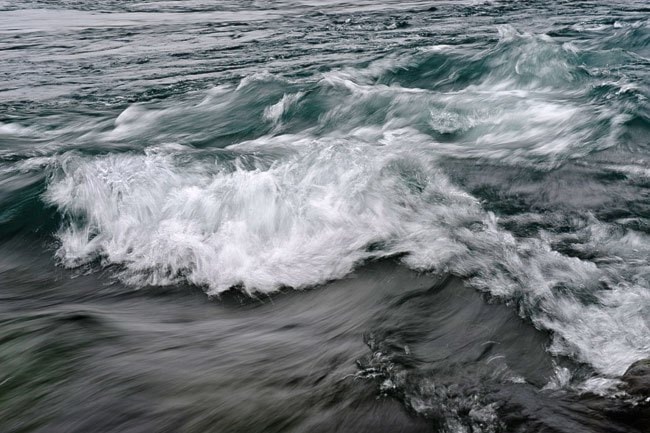The glaciers that feed the mighty Yukon River are melting. But new research suggests the territory’s power grid has little to worry about.
It turns out glaciers, like the giant Llewellyn near Atlin, B.C., don’t contribute as much to the river system as many may think.
In 30 years, from 1981 to 2011, runoff from glaciers only made up about 23 per cent of upper Yukon’s flow, said Jeffrey Kavanaugh, an assistant professor with the Department of Earth and Atmospheric Sciences at the University of Alberta.
Kavanaugh is working on a project with the Northern Climate Exchange at Yukon College. So far, the work has been funded by the Yukon Energy Corporation.
The project began with a conversation Kavanaugh had with Yukon Energy’s president and CEO, David Morrison.
“We were just talking about what it is that feeds the Yukon River and how much knowledge, for YEC, there was around some of those inputs,” said Lacia Kinnear, manager of the Exchange.
The two biggest gaps surrounded glacial knowledge and knowledge about climate change, said Kinnear.
“We realized that there wasn’t a lot of information available,” said Janet Patterson with Yukon Energy. “Obviously, we know that there is climate change, and because the Yukon River and that whole system supplies so much of the water that we use to produce electricity for Yukoners, we knew it was really important to better understand what was going on with climate change in terms of the glaciers and the snowfall and the rainfall and that kind of thing in that whole area.”
Kavanaugh’s team and the college wrote up a report on their findings so far, which points out that the majority of the water that goes into the Yukon River system comes from snowfall.
“About 60 percent of the river flow through Yukon is due to snowfall,” said Kavanaugh. “It is the dominant player.”
In the Atlin area, the temperature has warmed about 0.2 to 0.3 degrees Celsius per decade, and there’s been about a five per cent increase in precipitation, said Kavanaugh, referring to another 2011 Northern Climate Exchange report.
Warmer weather and more rain may be bad news for the glaciers, but they could be great news for Yukon Energy.
“It could mean greater river flows, and it might mean a change in timing to that flow,” said Kavanaugh. “When the water flows through Whitehorse may change a bit.”
Glaciers are really good at naturally adding to water flow at times when other sources are tapping out, said Kavanaugh.
More precipitation and warmer temperatures could disrupt that natural rhythm by causing a faster melt of the glaciers and more water flowing into the river overall.
But this could help out the territory’s energy needs, which become greater in the winter months, when the river’s flow freezes up.
Kavanaugh’s team and the college, with Yukon Energy’s cash, have put up two monitoring stations and have plans for three more, all at different altitudes and places around the river’s basin and the glaciers that help feed it.
The results of that monitoring will help give some short-term forecasts on what to expect and, if funding from the federal government comes through, will eventually help build a model to understand much longer forecasts for the region as well, said Kavanaugh.
But even without that data, the outlook for glaciers like the behemoth Llewellyn are pretty grim.
GlacierChange.org shows the Llewellyn shrinking from 471 square kilometres in 1991 to 458 square kilometres in 2011. That’s a loss of 13 square kilometres, or nearly three per cent of surface area.
“The glaciers in this area – it doesn’t sound like they’re doing great – but they’re not as immediately threatened,” said Kavanaugh. “They’ll likely continue wasting away for several decades and even then, they’re not as dominant players in the hydrology.”
“I just don’t want people to feel that the glaciers are going to dry up and we won’t have any water to produce electricity,” said Patterson. “We’re fine for many years into the future, but it’s something we need to be looking at and educate ourselves.”
Losing the Llewellyn is “not realistic, especially in our lifetime or our children’s lifetime,” said Kinnear. “But Yukon is seeing changes.”
Nearly everything – from melting permafrost preparations to food security – impact the water systems and are impacted by it.
This is why trying to understand what is going on now, and finding out what more we need to learn, said Kinnear.
Contact Roxanne Stasyszyn at roxannes@yukon-news.com
